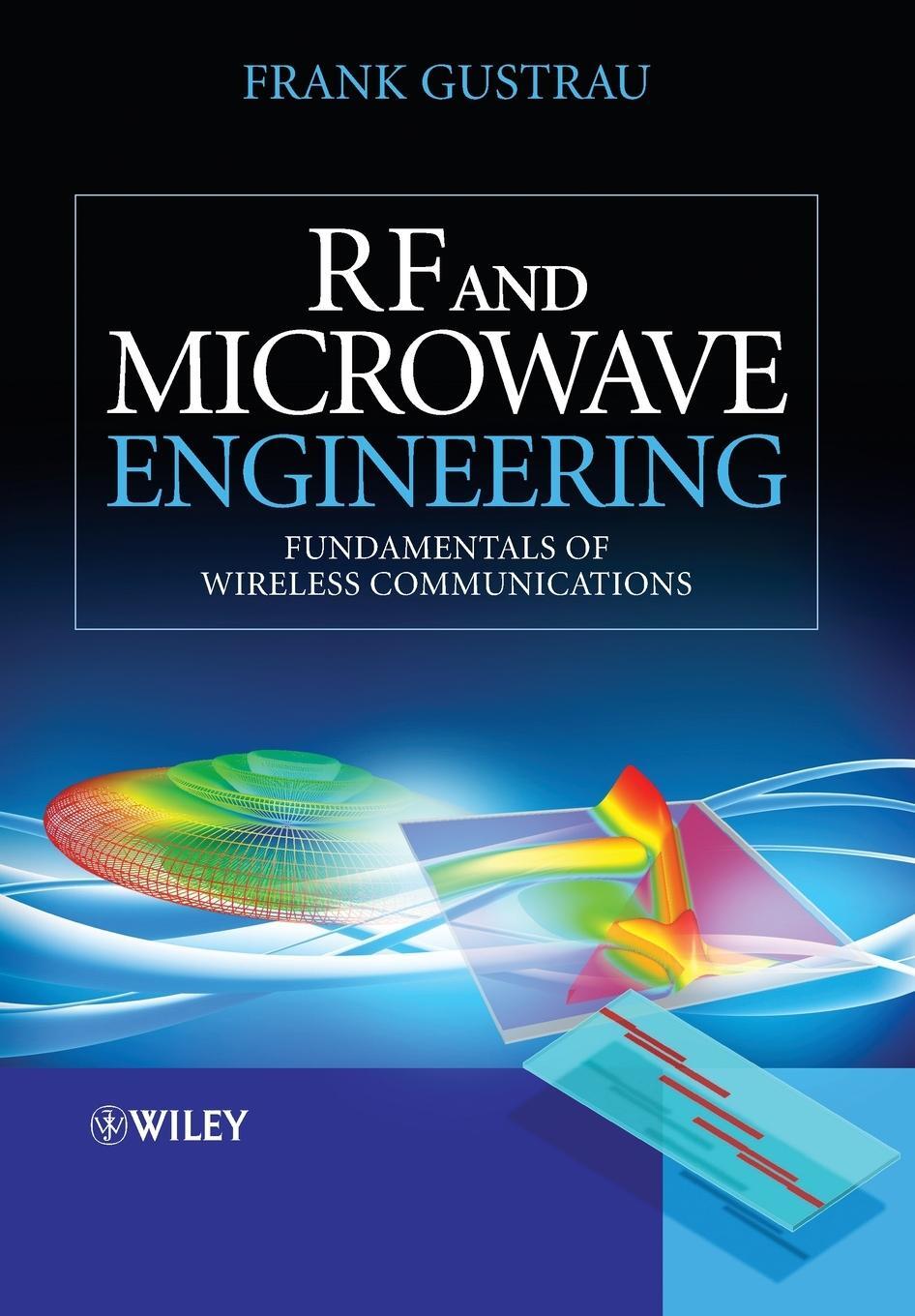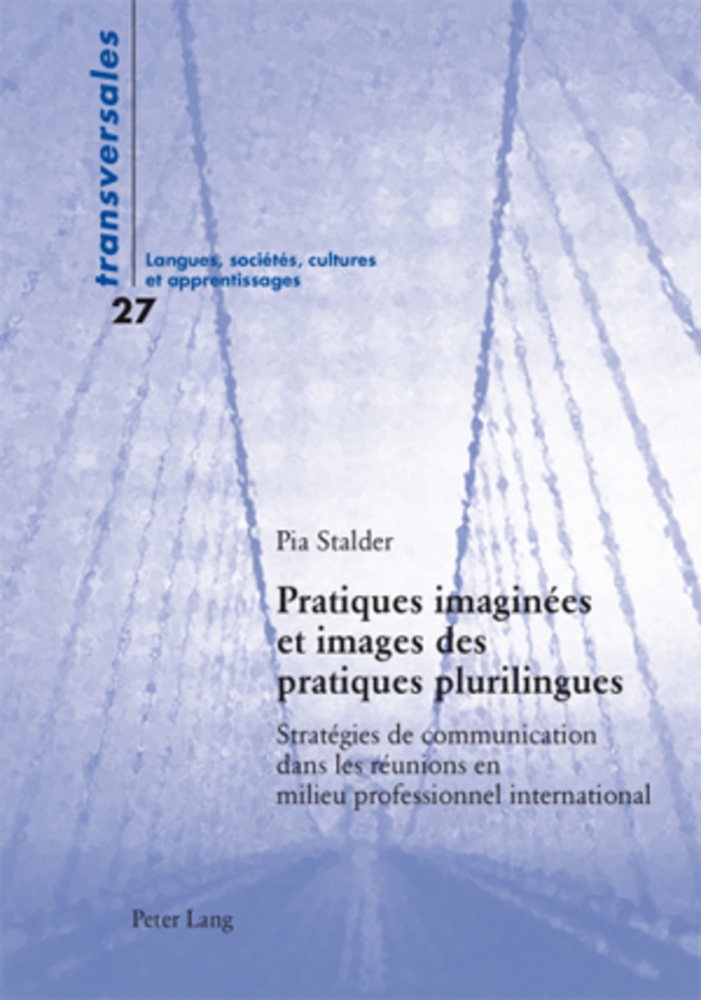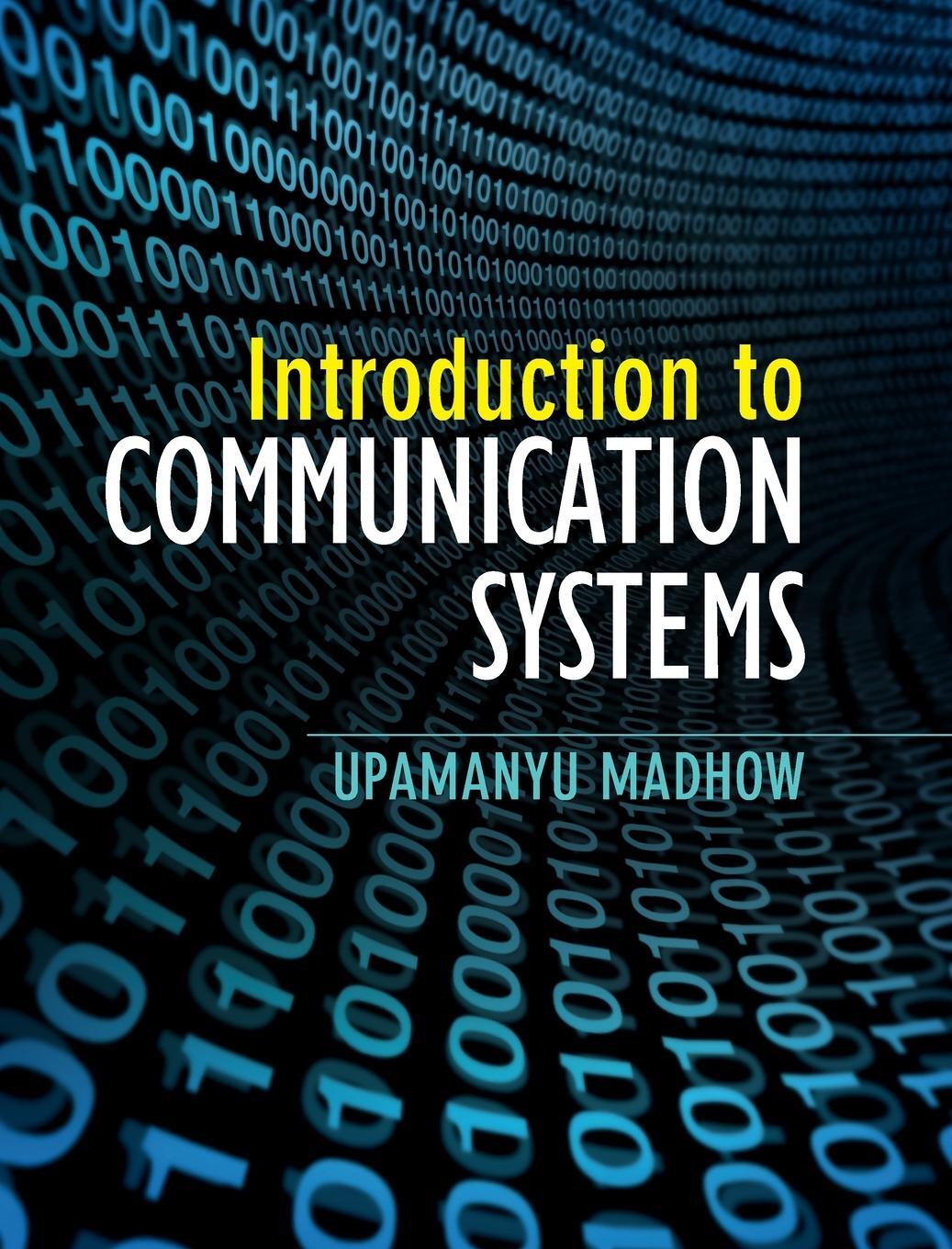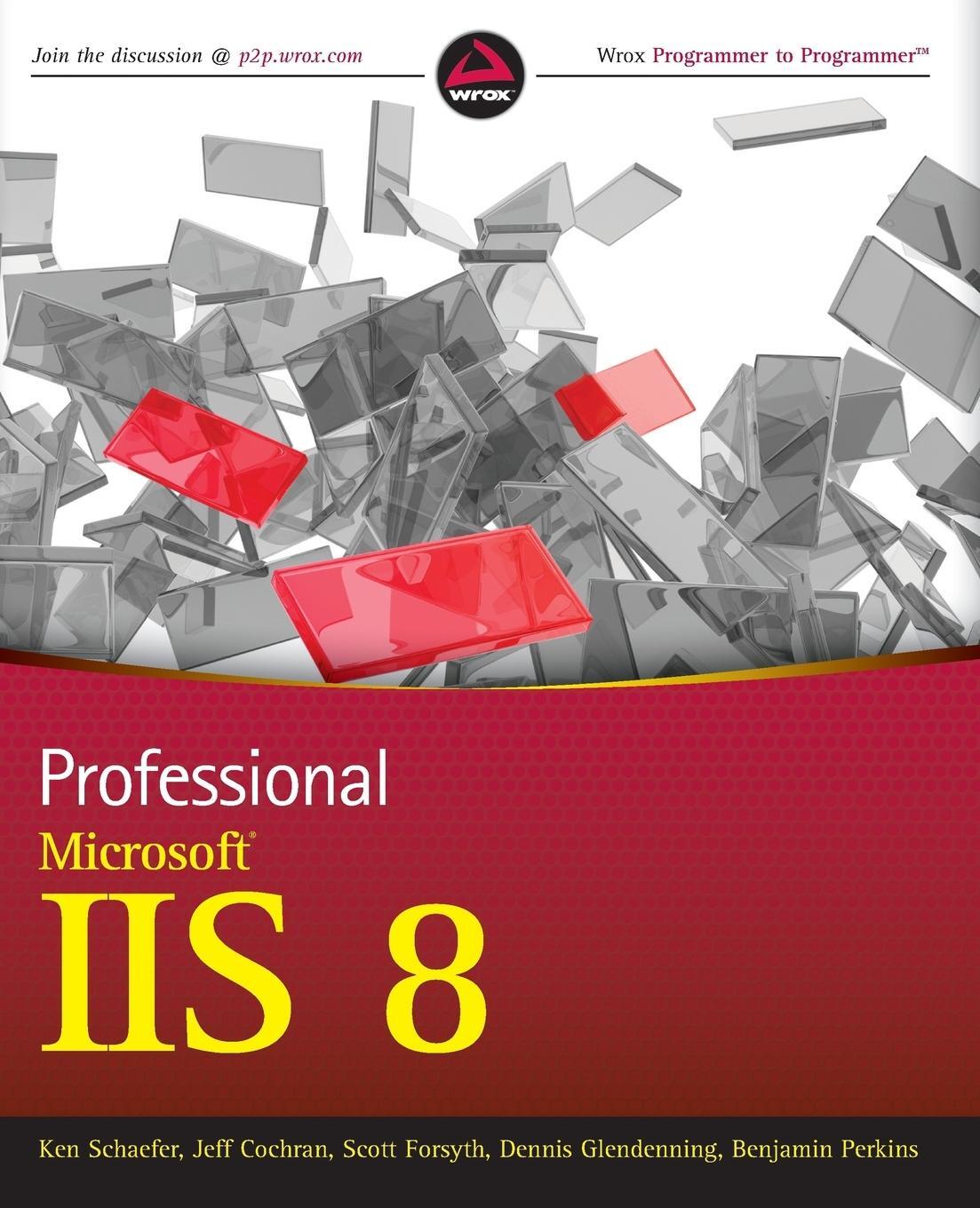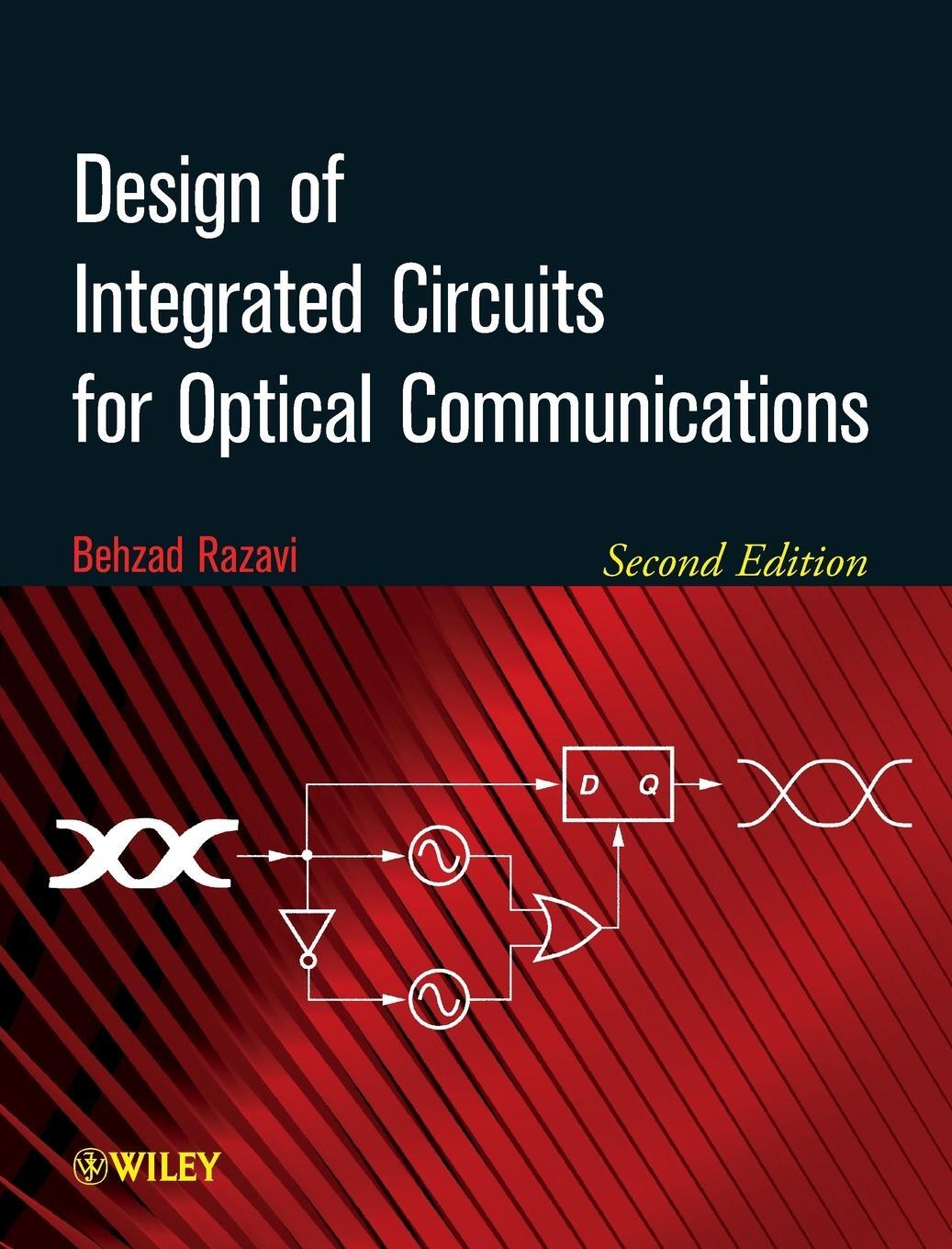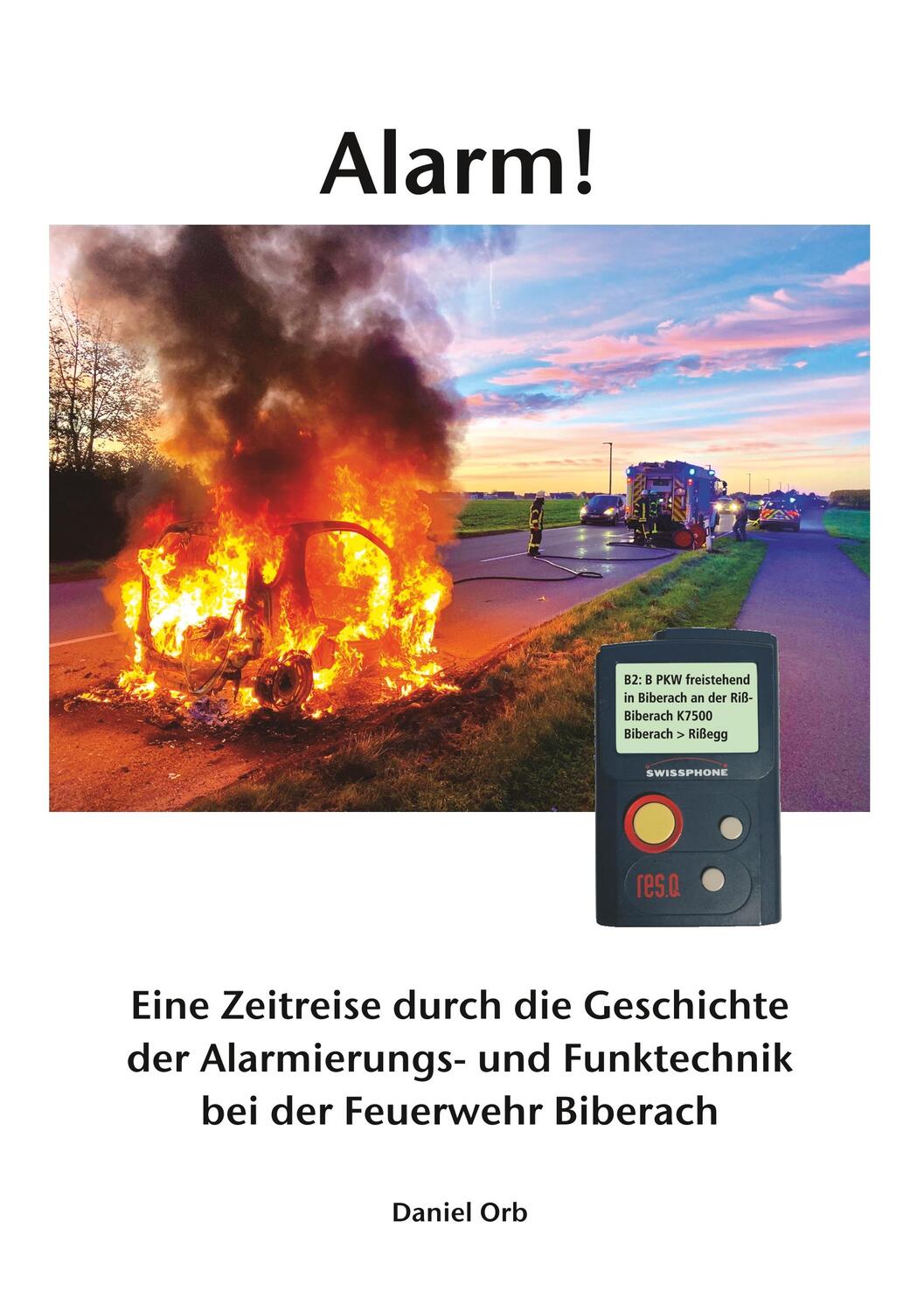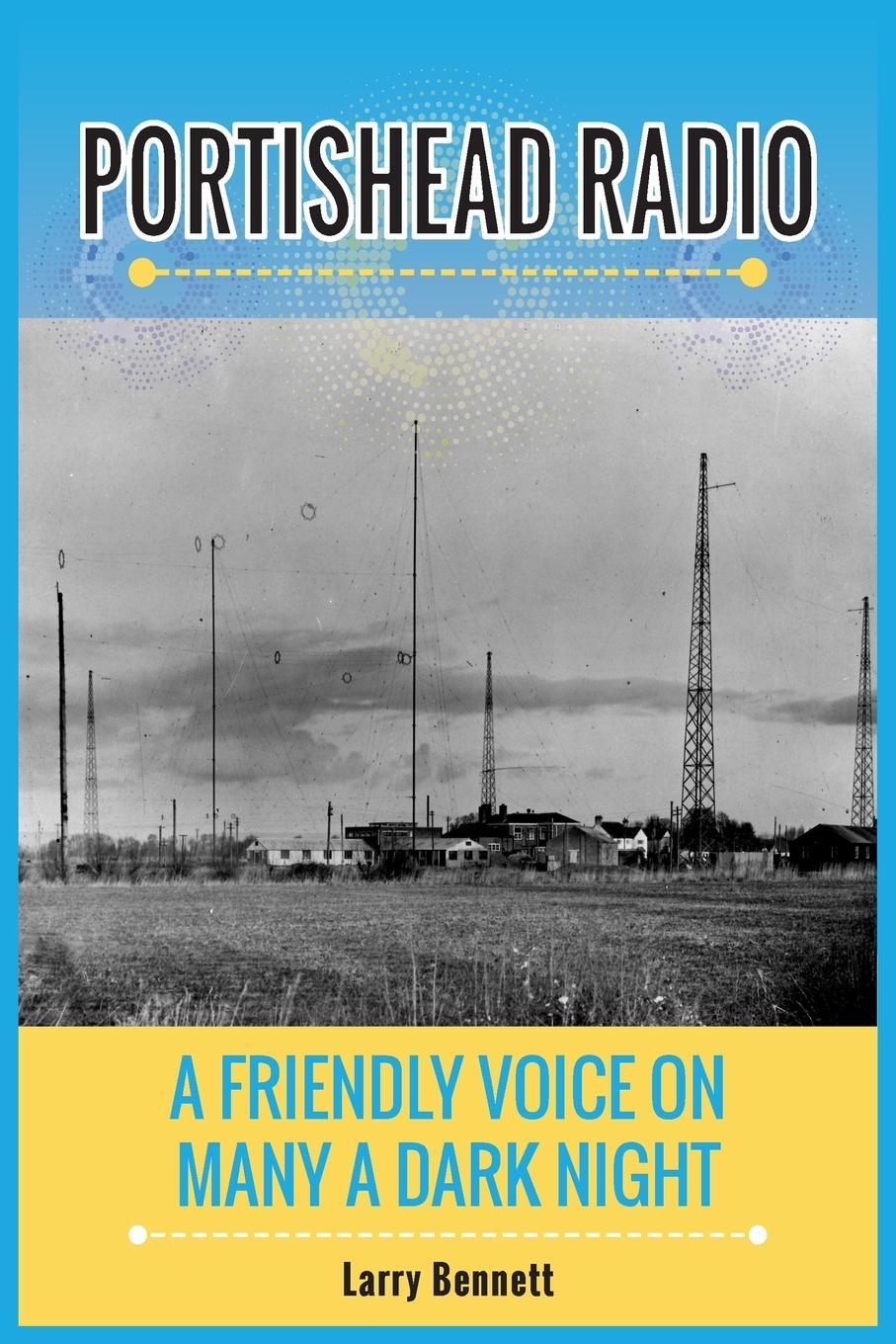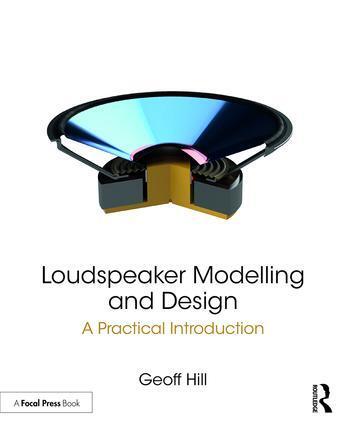80,70 €*
Versandkostenfrei per Post / DHL
Lieferzeit 1-2 Wochen
In this book, the author addresses a wide range of radio-frequency and microwave topics with emphasis on physical aspects including EM and voltage waves, transmission lines, passive circuits, antennas, radio wave propagation. Up-to-date RF design tools like RF circuit simulation, EM simulation and computerized smith charts, are used in various examples to demonstrate how these methods can be applied effectively in RF engineering practice.
Design rules and working examples illustrate the theoretical parts. The examples are close to real world problems, so the reader can directly transfer the methods within the context of their own work. At the end of each chapter a list of problems is given in order to deepen the reader's understanding of the chapter material and practice the new competences. Solutions are available on the author's website.
Key Features:
* Presents a wide range of RF topics with emphasis on physical aspects e.g. EM and voltage waves, transmission lines, passive circuits, antennas
* Uses various examples of modern RF tools that show how the methods can be applied productively in RF engineering practice
* Incorporates various design examples using circuit and electromagnetic (EM) simulation software
* Discusses the propagation of waves: their representation, their effects, and their utilization in passive circuits and antenna structures
* Provides a list of problems at the end of each chapter
* Includes an accompanying website containing solutions to the problems (http:\\[...]
This will be an invaluable textbook for bachelor and masters students on electrical engineering courses (microwave engineering, basic circuit theory and electromagnetic fields, wireless communications). Early-stage RF practitioners, engineers (e.g. application engineer) working in this area will also find this book of interest.
In this book, the author addresses a wide range of radio-frequency and microwave topics with emphasis on physical aspects including EM and voltage waves, transmission lines, passive circuits, antennas, radio wave propagation. Up-to-date RF design tools like RF circuit simulation, EM simulation and computerized smith charts, are used in various examples to demonstrate how these methods can be applied effectively in RF engineering practice.
Design rules and working examples illustrate the theoretical parts. The examples are close to real world problems, so the reader can directly transfer the methods within the context of their own work. At the end of each chapter a list of problems is given in order to deepen the reader's understanding of the chapter material and practice the new competences. Solutions are available on the author's website.
Key Features:
* Presents a wide range of RF topics with emphasis on physical aspects e.g. EM and voltage waves, transmission lines, passive circuits, antennas
* Uses various examples of modern RF tools that show how the methods can be applied productively in RF engineering practice
* Incorporates various design examples using circuit and electromagnetic (EM) simulation software
* Discusses the propagation of waves: their representation, their effects, and their utilization in passive circuits and antenna structures
* Provides a list of problems at the end of each chapter
* Includes an accompanying website containing solutions to the problems (http:\\[...]
This will be an invaluable textbook for bachelor and masters students on electrical engineering courses (microwave engineering, basic circuit theory and electromagnetic fields, wireless communications). Early-stage RF practitioners, engineers (e.g. application engineer) working in this area will also find this book of interest.
Prof. Frank Gustrau, University of Applied Sciences and Arts, Germany
Frank Gustrau has worked as an RF engineer in academia and industry. In 2003 he became professor at the University of Applied Sciences and Art in Dortmund, Germany. Throughout his career Frank has supervised students in their project work, given lectures on different RF related topics and worked extensively with EM and RF circuit simulation tools.
List of Abbreviations
List of Symbols
1 Introduction
1.1 Radiofrequency and Microwave Applications
1.2 Frequency Bands
1.3 Physical Phenomena in the High Frequency Domain
1.3.1 Electrically Short Transmission Line
1.3.2 Transmission Line with Length Greater than One-Tenth of Wavelength
1.3.3 Radiation and Antennas
1.4 Outline of the Following Chapters
References
Further Reading
2 Electromagnetic Fields and Waves
2.1 Electric and Magnetic Fields
2.1.1 Electrostatic Fields
2.1.2 Steady Electric Current and Magnetic Fields
2.1.3 Differential Vector Operations
2.2 Maxwell's Equations
2.2.1 Differential Form in the Time Domain
2.2.2 Differential Form for Harmonic Time Dependence
2.2.3 Integral Form
2.2.4 Constitutive Relations and Material Properties
2.2.5 Interface Conditions
2.3 Classification of Electromagnetic Problems
2.3.1 Static Fields
2.3.2 Quasi-static Fields
2.3.3 Coupled Electromagnetic Fields
2.4 Skin Effect
2.5 Electromagnetic Waves
2.5.1 Wave Equation and Plane Waves
2.5.2 Polarization of Waves
2.5.3 Reflection and Refraction
2.5.4 Spherical Waves
2.6 Summary
2.7 Problems
References
Further Reading
3 Transmission Line Theory and Transient Signals on Lines
3.1 Transmission Line Theory
3.1.1 Equivalent Circuit of a Line Segment
3.1.2 Telegrapher's Equation
3.1.3 Voltage and Current Waves on Transmission Lines
3.1.4 Load-Terminated Transmission Line
3.1.5 Input Impedance
3.1.6 Loss-less Transmission Lines
3.1.7 Low Loss Transmission Lines
3.1.8 Transmission Line with Different Terminations
3.1.9 Impedance Transformation with Loss-less Lines
3.1.10 Reflection Coefficient
3.1.11 Smith Chart
3.2 Transient Signals on Transmission Lines
3.2.1 Step Function
3.2.2 Rectangular Function
3.3 Eye Diagram
3.4 Summary
3.5 Problems
References
Further Reading
4 Transmission Lines and Waveguides
4.1 Overview
4.2 Coaxial Line
4.2.1 Specific Inductance and Characteristic Impedance
4.2.2 Attenuation of Low Loss Transmission Lines
4.2.3 Technical Frequency Range
4.2.4 Areas of Application
4.3 Microstrip Line
4.3.1 Characteristic Impedance and Effective Permittivity
4.3.2 Dispersion and Technical Frequency Range
4.3.3 Areas of Application
4.4 Stripline
4.4.1 Characteristic Impedance
4.4.2 Technical Frequency Range
4.5 Coplanar Line
4.5.1 Characteristic Impedance and Effective Permittivity
4.5.2 Coplanar Waveguide over Ground
4.5.3 Coplanar Waveguides and Air Bridges
4.5.4 Technical Frequency Range
4.5.5 Areas of Application
4.6 Rectangular Waveguide
4.6.1 Electromagnetic Waves between Electric Side Walls
4.6.2 Dominant Mode (TE10)
4.6.3 Higher Order Modes
4.6.4 Areas of Application
4.6.5 Excitation of Waveguide Modes
4.6.6 Cavity Resonators
4.7 Circular Waveguide
4.8 Two-Wire Line
4.8.1 Characteristic Impedance
4.8.2 Areas of Application
4.9 Three-Conductor Transmission Line
4.9.1 Even and Odd Modes
4.9.2 Characteristic Impedances and Propagation Constants
4.9.3 Line Termination for Even and Odd Modes
4.10 Problems
References
5 Scattering Parameters
5.1 Multi-Port Network Representations
5.2 Normalized Power Waves
5.3 Scattering Parameters and Power
5.4 S-Parameter Representation of Network Properties
5.4.1 Matching
5.4.2 Complex Conjugate Matching
5.4.3 Reciprocity
5.4.4 Symmetry
5.4.5 Passive and Loss-less Circuits
5.4.6 Unilateral Circuits
5.4.7 Specific Characteristic of Three-Port Networks
5.5 Calculation of S-Parameters
5.5.1 Reflection Coefficients
5.5.2 Transmission Coefficients
5.5.3 Renormalization
5.6 Signal Flow Method
5.7 S-Parameter Measurement
5.8 Problems
References
Further Reading
6 RF Components and Circuits
6.1 Equivalent Circuits of Concentrated Passive Components
6.1.1 Resistor
6.1.2 Capacitor
6.1.3 Inductor
6.2 Transmission Line Resonator
6.2.1 Half-Wave Resonator
6.2.2 Quarter-Wave Resonator
6.3 Impedance Matching
6.3.1 LC-Networks
6.3.2 Matching Using Distributed Elements
6.4 Filter
6.4.1 Classical LC-Filter Design
6.4.2 Butterworth Filter
6.5 Transmission Line Filter
6.5.1 Edge-Coupled Line Filters
6.5.2 Hairpin Filter
6.5.3 Stepped Impedance Filter
6.5.4 Parasitic Box Resonance
6.5.5 Waveguide Filter
6.6 Circulator
6.7 Power Divider
6.7.1 Wilkinson Power Divider
6.7.2 Unequal Split Power Divider
6.8 Branchline Coupler
6.8.1 Conventional 3 dB Coupler
6.8.2 Unequal Split Branchline Coupler
6.9 Rat Race Coupler
6.10 Directional Coupler
6.11 Balanced to Unbalanced Circuits
6.12 Electronic Circuits
6.12.1 Mixers 238
6.12.2 Amplifiers and Oscillators
6.13 RF Design Software
6.13.1 RF Circuit Simulators
6.13.2 Three-Dimensional Electromagnetic Simulators
6.14 Problems
References
Further Reading
7 Antennas
7.1 Fundamental Parameters
7.1.1 Nearfield and Farfield
7.1.2 Isotropic Radiator
7.1.3 Radiation Pattern and Related Parameters
7.1.4 Impedance Matching and Bandwidth
7.2 Standard Types of Antennas
7.3 Mathematical Treatment of the Hertzian Dipole
7.4 Wire Antennas
7.4.1 Half-Wave Dipole
7.4.2 Monopole
7.4.3 Concepts for Reducing Antenna Height
7.5 Planar Antennas
7.5.1 Rectangular Patch Antenna
7.5.2 Circularly Polarizing Patch Antennas
7.5.3 Planar Dipole and Inverted-F Antenna
7.6 Antenna Arrays
7.6.1 Single Element Radiation Pattern and Array Factor
7.6.2 Phased Array Antennas
7.6.3 Beam Forming
7.7 Modern Antenna Concepts
7.8 Problems
References
Further Reading
8 Radio Wave Propagation
8.1 Propagation Mechanisms
8.2 Basic Propagation Models
8.2.1 Free Space Loss
8.2.2 Attenuation of Air
8.2.3 Plane Earth Loss
8.2.4 Point-to-Point Radio Links
8.2.5 Layered Media
8.3 Path Loss Models
8.3.1 Multipath Environment
8.3.2 Clutter Factor Model
8.3.3 Okumura-Hata Model
8.3.4 Physical Models and Numerical Methods
8.4 Problems
References
Further Reading
Appendix A
A.1 Coordinate Systems
A.1.1 Cartesian Coordinate System
A.1.2 Cylindrical Coordinate System
A.1.3 Spherical Coordinate System
A.2 Logarithmic Representation
A.2.1 Dimensionless Quantities
A.2.2 Relative and Absolute Ratios
A.2.3 Link Budget
| Erscheinungsjahr: | 2012 |
|---|---|
| Fachbereich: | Nachrichtentechnik |
| Genre: | Technik |
| Rubrik: | Naturwissenschaften & Technik |
| Medium: | Taschenbuch |
| Seiten: | 368 |
| Inhalt: | 360 S. |
| ISBN-13: | 9781119951711 |
| ISBN-10: | 1119951712 |
| Sprache: | Englisch |
| Herstellernummer: | 1W119951710 |
| Einband: | Kartoniert / Broschiert |
| Autor: | Gustrau, Frank |
| Hersteller: |
John Wiley & Sons
John Wiley & Sons Inc |
| Maße: | 244 x 170 x 19 mm |
| Von/Mit: | Frank Gustrau |
| Erscheinungsdatum: | 20.07.2012 |
| Gewicht: | 0,621 kg |
Prof. Frank Gustrau, University of Applied Sciences and Arts, Germany
Frank Gustrau has worked as an RF engineer in academia and industry. In 2003 he became professor at the University of Applied Sciences and Art in Dortmund, Germany. Throughout his career Frank has supervised students in their project work, given lectures on different RF related topics and worked extensively with EM and RF circuit simulation tools.
List of Abbreviations
List of Symbols
1 Introduction
1.1 Radiofrequency and Microwave Applications
1.2 Frequency Bands
1.3 Physical Phenomena in the High Frequency Domain
1.3.1 Electrically Short Transmission Line
1.3.2 Transmission Line with Length Greater than One-Tenth of Wavelength
1.3.3 Radiation and Antennas
1.4 Outline of the Following Chapters
References
Further Reading
2 Electromagnetic Fields and Waves
2.1 Electric and Magnetic Fields
2.1.1 Electrostatic Fields
2.1.2 Steady Electric Current and Magnetic Fields
2.1.3 Differential Vector Operations
2.2 Maxwell's Equations
2.2.1 Differential Form in the Time Domain
2.2.2 Differential Form for Harmonic Time Dependence
2.2.3 Integral Form
2.2.4 Constitutive Relations and Material Properties
2.2.5 Interface Conditions
2.3 Classification of Electromagnetic Problems
2.3.1 Static Fields
2.3.2 Quasi-static Fields
2.3.3 Coupled Electromagnetic Fields
2.4 Skin Effect
2.5 Electromagnetic Waves
2.5.1 Wave Equation and Plane Waves
2.5.2 Polarization of Waves
2.5.3 Reflection and Refraction
2.5.4 Spherical Waves
2.6 Summary
2.7 Problems
References
Further Reading
3 Transmission Line Theory and Transient Signals on Lines
3.1 Transmission Line Theory
3.1.1 Equivalent Circuit of a Line Segment
3.1.2 Telegrapher's Equation
3.1.3 Voltage and Current Waves on Transmission Lines
3.1.4 Load-Terminated Transmission Line
3.1.5 Input Impedance
3.1.6 Loss-less Transmission Lines
3.1.7 Low Loss Transmission Lines
3.1.8 Transmission Line with Different Terminations
3.1.9 Impedance Transformation with Loss-less Lines
3.1.10 Reflection Coefficient
3.1.11 Smith Chart
3.2 Transient Signals on Transmission Lines
3.2.1 Step Function
3.2.2 Rectangular Function
3.3 Eye Diagram
3.4 Summary
3.5 Problems
References
Further Reading
4 Transmission Lines and Waveguides
4.1 Overview
4.2 Coaxial Line
4.2.1 Specific Inductance and Characteristic Impedance
4.2.2 Attenuation of Low Loss Transmission Lines
4.2.3 Technical Frequency Range
4.2.4 Areas of Application
4.3 Microstrip Line
4.3.1 Characteristic Impedance and Effective Permittivity
4.3.2 Dispersion and Technical Frequency Range
4.3.3 Areas of Application
4.4 Stripline
4.4.1 Characteristic Impedance
4.4.2 Technical Frequency Range
4.5 Coplanar Line
4.5.1 Characteristic Impedance and Effective Permittivity
4.5.2 Coplanar Waveguide over Ground
4.5.3 Coplanar Waveguides and Air Bridges
4.5.4 Technical Frequency Range
4.5.5 Areas of Application
4.6 Rectangular Waveguide
4.6.1 Electromagnetic Waves between Electric Side Walls
4.6.2 Dominant Mode (TE10)
4.6.3 Higher Order Modes
4.6.4 Areas of Application
4.6.5 Excitation of Waveguide Modes
4.6.6 Cavity Resonators
4.7 Circular Waveguide
4.8 Two-Wire Line
4.8.1 Characteristic Impedance
4.8.2 Areas of Application
4.9 Three-Conductor Transmission Line
4.9.1 Even and Odd Modes
4.9.2 Characteristic Impedances and Propagation Constants
4.9.3 Line Termination for Even and Odd Modes
4.10 Problems
References
5 Scattering Parameters
5.1 Multi-Port Network Representations
5.2 Normalized Power Waves
5.3 Scattering Parameters and Power
5.4 S-Parameter Representation of Network Properties
5.4.1 Matching
5.4.2 Complex Conjugate Matching
5.4.3 Reciprocity
5.4.4 Symmetry
5.4.5 Passive and Loss-less Circuits
5.4.6 Unilateral Circuits
5.4.7 Specific Characteristic of Three-Port Networks
5.5 Calculation of S-Parameters
5.5.1 Reflection Coefficients
5.5.2 Transmission Coefficients
5.5.3 Renormalization
5.6 Signal Flow Method
5.7 S-Parameter Measurement
5.8 Problems
References
Further Reading
6 RF Components and Circuits
6.1 Equivalent Circuits of Concentrated Passive Components
6.1.1 Resistor
6.1.2 Capacitor
6.1.3 Inductor
6.2 Transmission Line Resonator
6.2.1 Half-Wave Resonator
6.2.2 Quarter-Wave Resonator
6.3 Impedance Matching
6.3.1 LC-Networks
6.3.2 Matching Using Distributed Elements
6.4 Filter
6.4.1 Classical LC-Filter Design
6.4.2 Butterworth Filter
6.5 Transmission Line Filter
6.5.1 Edge-Coupled Line Filters
6.5.2 Hairpin Filter
6.5.3 Stepped Impedance Filter
6.5.4 Parasitic Box Resonance
6.5.5 Waveguide Filter
6.6 Circulator
6.7 Power Divider
6.7.1 Wilkinson Power Divider
6.7.2 Unequal Split Power Divider
6.8 Branchline Coupler
6.8.1 Conventional 3 dB Coupler
6.8.2 Unequal Split Branchline Coupler
6.9 Rat Race Coupler
6.10 Directional Coupler
6.11 Balanced to Unbalanced Circuits
6.12 Electronic Circuits
6.12.1 Mixers 238
6.12.2 Amplifiers and Oscillators
6.13 RF Design Software
6.13.1 RF Circuit Simulators
6.13.2 Three-Dimensional Electromagnetic Simulators
6.14 Problems
References
Further Reading
7 Antennas
7.1 Fundamental Parameters
7.1.1 Nearfield and Farfield
7.1.2 Isotropic Radiator
7.1.3 Radiation Pattern and Related Parameters
7.1.4 Impedance Matching and Bandwidth
7.2 Standard Types of Antennas
7.3 Mathematical Treatment of the Hertzian Dipole
7.4 Wire Antennas
7.4.1 Half-Wave Dipole
7.4.2 Monopole
7.4.3 Concepts for Reducing Antenna Height
7.5 Planar Antennas
7.5.1 Rectangular Patch Antenna
7.5.2 Circularly Polarizing Patch Antennas
7.5.3 Planar Dipole and Inverted-F Antenna
7.6 Antenna Arrays
7.6.1 Single Element Radiation Pattern and Array Factor
7.6.2 Phased Array Antennas
7.6.3 Beam Forming
7.7 Modern Antenna Concepts
7.8 Problems
References
Further Reading
8 Radio Wave Propagation
8.1 Propagation Mechanisms
8.2 Basic Propagation Models
8.2.1 Free Space Loss
8.2.2 Attenuation of Air
8.2.3 Plane Earth Loss
8.2.4 Point-to-Point Radio Links
8.2.5 Layered Media
8.3 Path Loss Models
8.3.1 Multipath Environment
8.3.2 Clutter Factor Model
8.3.3 Okumura-Hata Model
8.3.4 Physical Models and Numerical Methods
8.4 Problems
References
Further Reading
Appendix A
A.1 Coordinate Systems
A.1.1 Cartesian Coordinate System
A.1.2 Cylindrical Coordinate System
A.1.3 Spherical Coordinate System
A.2 Logarithmic Representation
A.2.1 Dimensionless Quantities
A.2.2 Relative and Absolute Ratios
A.2.3 Link Budget
| Erscheinungsjahr: | 2012 |
|---|---|
| Fachbereich: | Nachrichtentechnik |
| Genre: | Technik |
| Rubrik: | Naturwissenschaften & Technik |
| Medium: | Taschenbuch |
| Seiten: | 368 |
| Inhalt: | 360 S. |
| ISBN-13: | 9781119951711 |
| ISBN-10: | 1119951712 |
| Sprache: | Englisch |
| Herstellernummer: | 1W119951710 |
| Einband: | Kartoniert / Broschiert |
| Autor: | Gustrau, Frank |
| Hersteller: |
John Wiley & Sons
John Wiley & Sons Inc |
| Maße: | 244 x 170 x 19 mm |
| Von/Mit: | Frank Gustrau |
| Erscheinungsdatum: | 20.07.2012 |
| Gewicht: | 0,621 kg |

